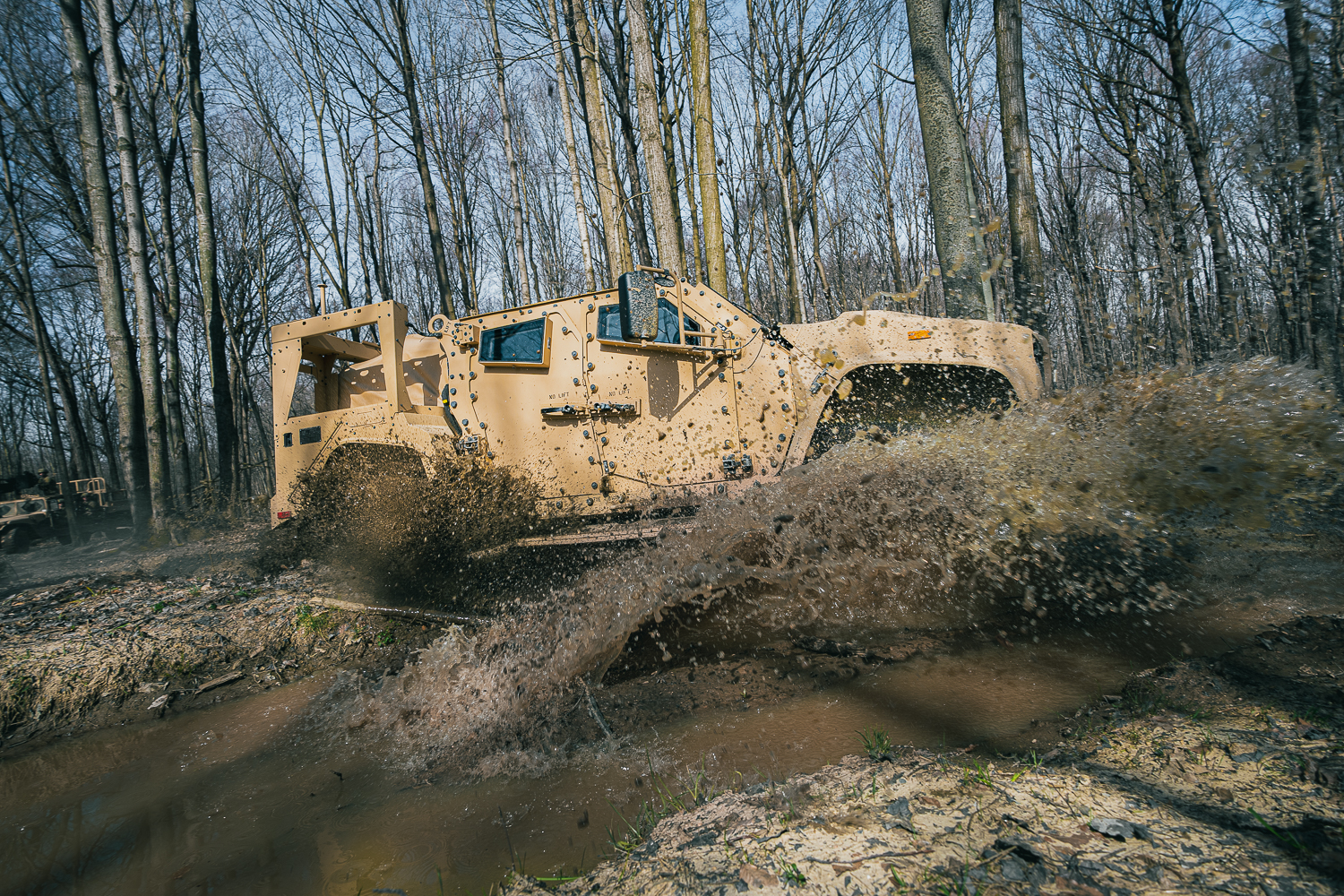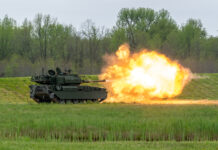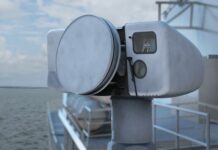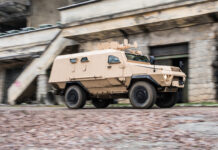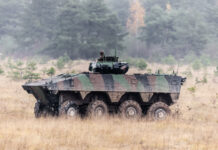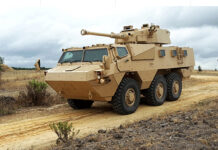Protected patrol vehicle programmes: a survey
Sidney E. Dean
Protected patrol vehicles balance mobility with protection from mine and ballistic threats. While they come in various size, weight and protection configurations, the current trend is pointing towards prioritising enhanced mobility over heavy armour. What follows is a selected overview of currently marketed systems.
Protected patrol vehicles (PPVs) are versatile or multi-mission-capable vehicles. The British Army provides a concise profile, stating that PPVs “are used in combat, combat support and combat service support roles across the battlespace, including within the direct fire zone. Some have an organic self-defence capability which can be optimised to support offensive operations.” They come in many iterations and in various vehicle types. During the initial phases of the Afghanistan and Iraq conflicts, Western armed forces rushed to procure thousands of protected platforms, many of them mine-resistant, ambush-protected (MRAP) vehicles, which subsequently formed the backbone of many PPV fleets. With the end of those conflicts, many services moved to divest or reduce their MRAP inventories, reasoning that they would have limited utility in future peer-warfare.
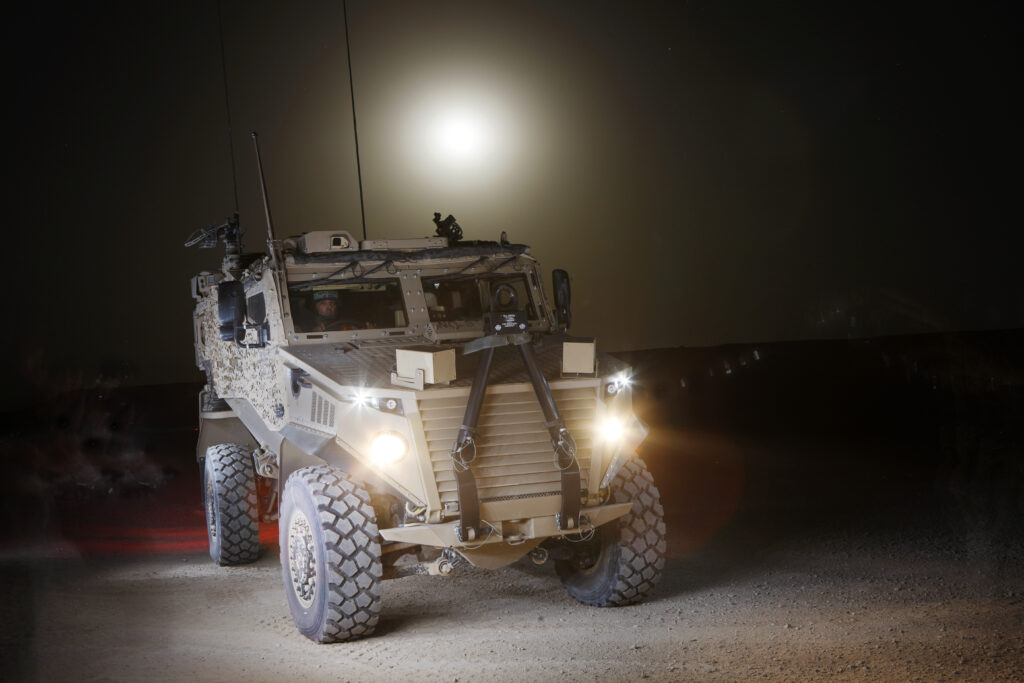
- LMP – Light Mobility Vehicle (LMV); an unprotected platform in the ≤5 tonne range.
- LMP – Light Protected Mobility (LPM; a lightly-protected platform in the ≤10 tonne range.
- LMP – Medium Protected Mobility (MPM); a medium-protected platform in the <20 tonne range.
Current PPV procurement programmes are placing greater emphasis on mobility and flexibility over pure armour protection as the primary survivability factor. That being said, PPVs continue to be acquired in various weight and size classes, from lightly- to heavily-armoured, from 4×4 to 6×6 configured vehicles. This continues to include some MRAPs, although the newer models tend to have a lower centre of gravity and improved mobility compared to early models. While the precise borders between weight classes are somewhat fluid, systems below 10 tonnes gross vehicle weight (GVW) are generally considered lightweight, with those up to 20 tonnes classified as medium weight. Mission spectrum and capabilities profile can factor into how vehicles which straddle two weight classes are categorised. As indicated above, PPVs are multi-capable systems which can be configured or dispatched in a variety of mission modes as required. Irrespective of vehicle weight class, sensors, weapons and other mission-specific equipment are major factors determining both operational capability and survivability.
GDLS Foxhound
The British Army introduced the Foxhound light protected patrol vehicle in 2011. Originally designed and produced by Ricardo PLC and Force Protection Europe (now owned by General Dynamics Land Systems; GDLS) as the Ocelot, it is lighter and more manoeuvrable than the service’s heavier PPVs, making it particularly suitable for mentoring and partnering missions. The British Army’s website describes the Foxhound as providing “unprecedented levels of blast protection for its size and weight (…) This is an agile and versatile vehicle that will be a mainstay in the Army for years to come.” The 7,500 kg GVW vehicle accommodates six including the driver, and has an on-road speed of 110 km/h.
The current inventory is expected to serve until 2030. In July 2024, the MoD published a voluntary ex-ante transparency (VEAT) notice confirming the procurement of up to three Foxhound technical demonstrator platforms (TDPs) from GDLS. According to the VEAT, these will be used to assess whether the currently in-service Foxhound fleet could be modified to extend its use beyond 2030 or whether new-build Foxhounds could meet an extant vehicle requirement.
Arquus Scarabee
The Scarabee developed by Volvo subsidiary Arquus stands out among other PPVs due to its bold modern look, hybrid-electric propulsion, and unique capabilities profile. The air-droppable vehicle has a GVW of 8,000 kg, and at 5.25 m long, 2.1 m wide, and 2 m tall (without optional weapons mounts), presenting a comparatively low silhouette. Together with the ability to approach targets in electric drive mode (greatly decreasing its acoustic and thermal signatures), this boosts survivability as well as the suitability for covert operations. The four-wheel steering capability, which enables the vehicle to ‘crab steer’ sideways, further enhances the ability to make maximum use of urban, woodland or mountain terrain for surveillance and covert approaches.
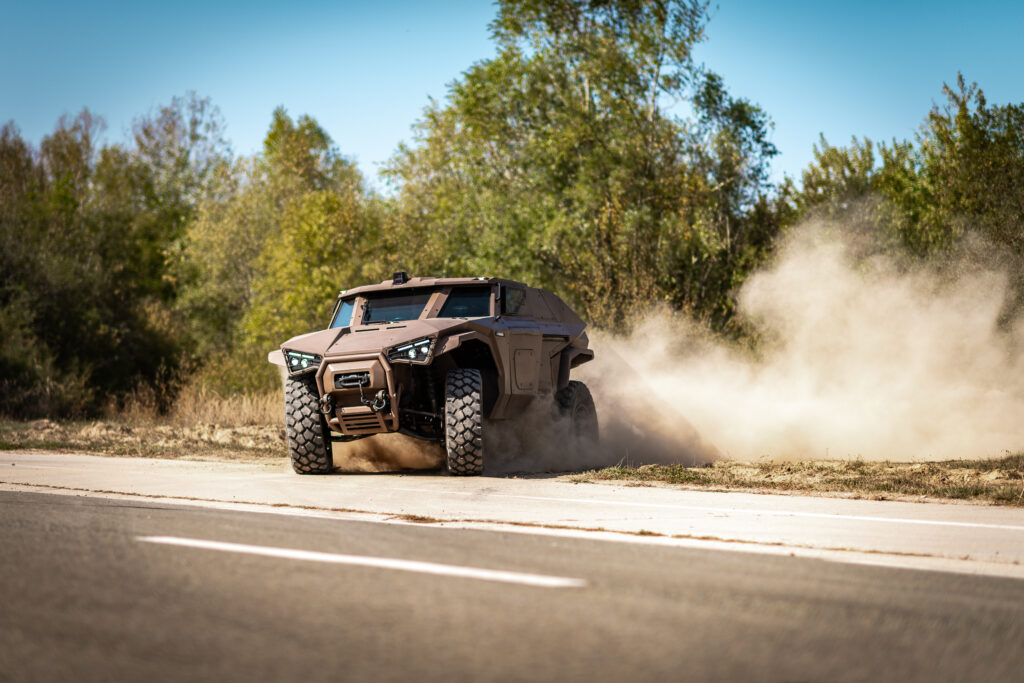
Joint Light Tactical Vehicle (JLTV)
The US and numerous other armed forces continue to acquire the JLTV, with the vast majority of vehicles being delivered to the ground forces. The 6.2 m vehicle has a GVW of approximately 10,200 kg, and can be transported by heavy-lift helicopter. The JLTV is designed to provide protection comparable to MRAP vehicles while being considerably more manoeuvrable and fuel-efficient. The basic protection level of STANAG 4569 Level 1 can be enhanced with additional modular armour kits as mission conditions dictate.
As defined by the US Army, the JLTV is intended to provide protected, sustained, networked mobility across the full range of military operations, while balancing payload capacity, performance, and protection. The combat tactical vehicle variant of the JLTV can be configured for general purpose, heavy gun carrier, and close combat weapon carrier missions, with corresponding mission-specific equipment packages.
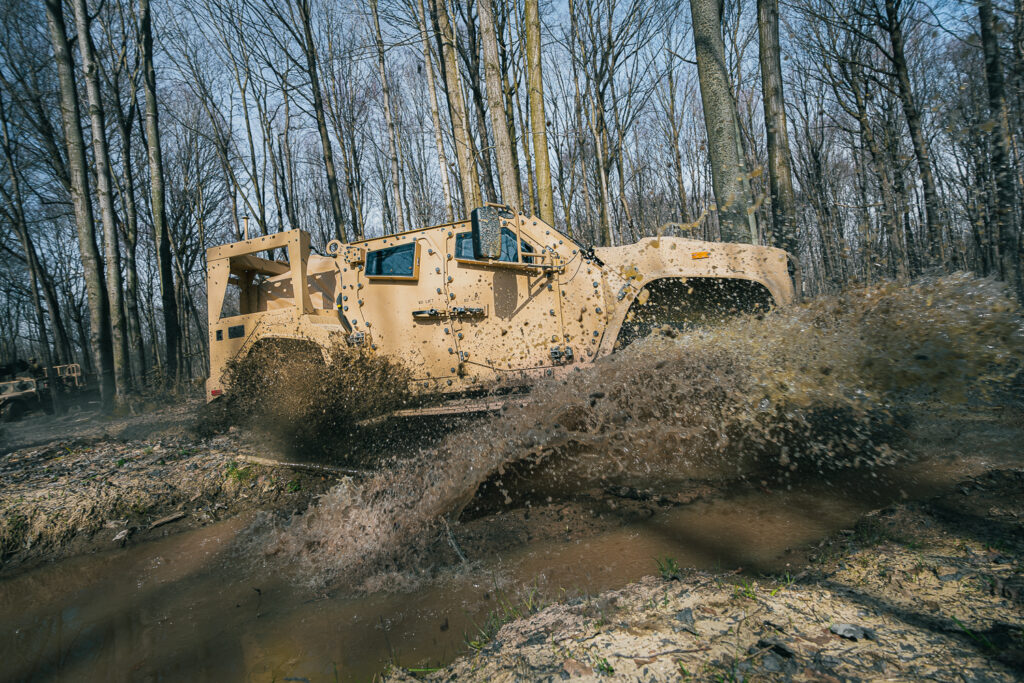
GDELS Eagle
The General Dynamics European Land Systems (GDELS) Eagle V tactical armoured vehicle is available in 4×4 and 6×6 configurations, with respective GVWs of 10,000 kg and 15,000 kg. Both configurations utilise the same chassis and drive train components to simplify logistics and maintenance. The De Dion suspension with its axle articulation and high wheel travel enhances off-road mobility and stability while minimising crew discomfort. The basic STANAG 4569 Level 1 protection package can be augmented by supplementary modular armour up to STANAG 4569 Level 3, and can include RPG netting. An RWS can be optionally mounted on the vehicle roof, with various user-defined armaments possible.
Both variants are highly versatile and can be configured for numerous roles. The 5.4 m long 4×4 vehicle has a 3 tonne payload and accommodates four combat-equipped soldiers including the driver and commander (2+2); while a fifth seat can be optionally integrated for non-permanent use. The high torque Cummins Diesel engine permits on-road speeds of 110 km/h and a range of 700 km. The 6.9 metre 6×6 offers a higher personnel-carrying capacity, allowing up to 12 including driver and commander (2+10) in the troop carrier configuration, as well as higher useful payload capacity of 5 tonnes.
Nurol Makina Ejder Yalçın
In September 2023, Nurol Makina presented the Ejder Yalçın 4×4 PPV at the UK’s Millbrook Proving Ground in Bedfordshire (UK). The vehicle was marketed to the UK as the ‘Dragon 4×4’, and was being geared toward the British Army’s LMP-MPM programme. At the Defence Vehicle Dynamics 2024 (DVD 2024) exhibition, Nurol Makina also announced the establishment of a British subsidiary, Nurol Makina UK (NMS UK), to market vehicles and services to the British Army and third countries, and signed a partnership agreement with NP Aerospace to provide vehicle integration and support services. Building on these initiatives, NMS UK acquired a manufacturing facility in Leamington Spa in September 2024, to allow UK domestic production.
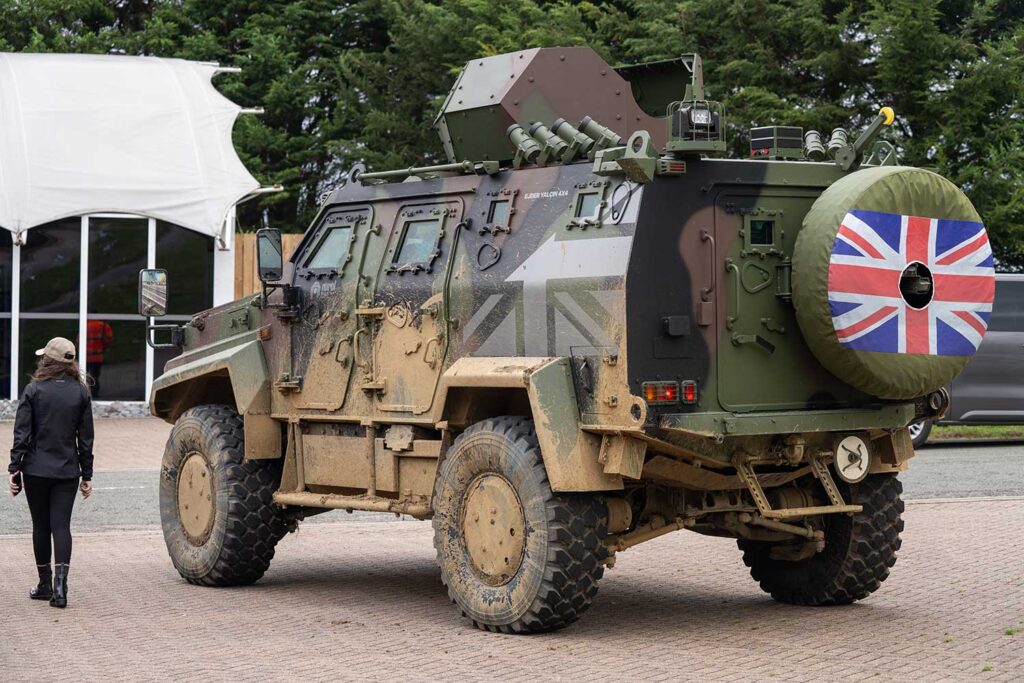
Arquus MAV’Rx
The newest PPV entry is the MAV’Rx (pronounced: ‘Mavrix’), presented as a prototype at Eurosatory 2024. Arquus emphasises that the multi-mission platform has been designed for high-intensity operations, serving in roles ranging from personnel carrier to anti-tank platform, to command and control or medical evacuation vehicle. As described by the firm, the MAV’Rx is conceived as a well-protected vehicle that retains a high degree of mobility while accepting heavier payloads.
The 19,000 kg GVW, 6.98 m long vehicle features a large internal space capable of seating the driver, commander, and eight dismounts, who benefit from relatively generous headroom, interior climate control, as well as ergonomic seating and design. Electrically assisted doors and a rear ramp facilitate rapid exit and entry. The vehicle is fitted with a 298 kW (400 hp) engine and seven-speed automatic transmission, permitting speeds of around 100 km/h, while the independent suspension, CTIS and run-flat tyres preserve mobility and stability under many tactical scenarios.
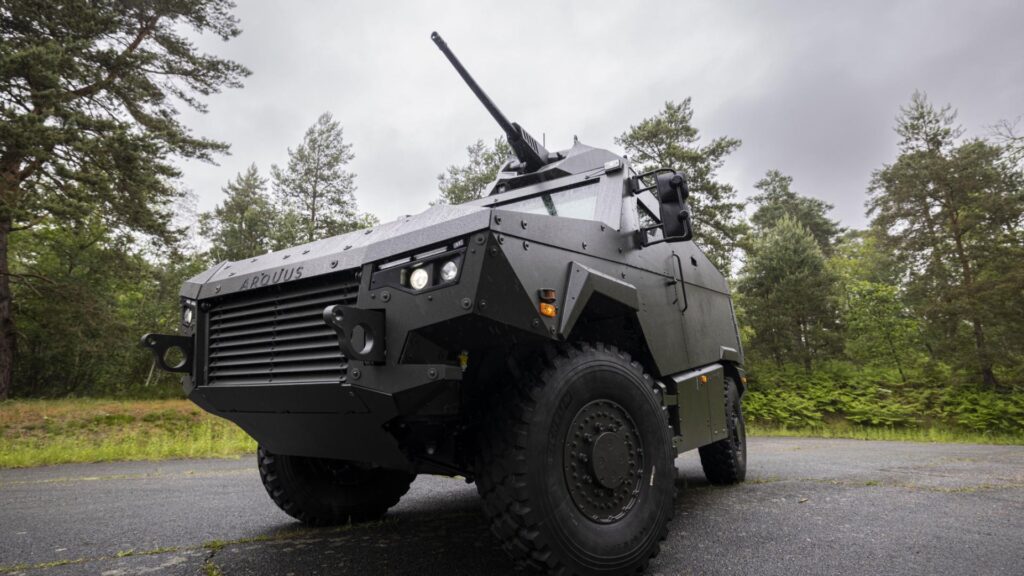
Rheinmetall Fuchs Evolution
At the heavier end of the scale, and moving into dedicated wheeled APC territory, the Fuchs 6×6 family was introduced in 1979, with the Fuchs 2 being built by Rheinmetall MAN Military Vehicles (RMMV) since 2007. The Fuchs family has seen service with numerous users worldwide, and Rheinmetall is now offering the Fuchs Evolution as the latest family variant.
Like its predecessors, the Fuchs Evolution can be configured for a wide variety of roles including combat reconnaissance vehicle, APC, and ambulance. Technology upgrades promise to keep the Fuchs Evolution relevant for the coming decades. System attributes revealed by Rheinmetall include a digital electronic architecture, a 360° surveillance system with day and night cameras, and a nuclear, biological, chemical (NBC) filtration system. In terms of mobility, the vehicle is provided with an MTU 6V 199 TE20 turbocharged diesel engine developing 339 kW (455 hp), permitting a top speed of 100 km/h, and a range of 800 km. The vehicle remains amphibious up to weights of 22,000 kg, and can be fitted with rear propellers, permitting swim speeds of up to 10 km/h. Rheinmetall cites a maximum GVW of 25,000 kg, including up to 9,000 kg payload capacity. The hull offers up to 11.5 m3 of internal space in the high-roof variant (with an interior roof height of 1.60 m), and 10 m3 in the standard roof configuration (with an interior height 1.40 m).

New armour solutions?
In general, lightly armoured vehicles tend to be the most agile. The obvious disadvantage is the greater vulnerability to hostile fire. New battlefield threats, including drones and loitering munitions, have added a new dimension to protecting military vehicles of all classes. Optional modular armour upgrades can address threat scenarios on a mission-by-mission basis, albeit at the expense of reduced mobility and range.
Innovative materials promise some relief here by enabling production of modular armour components which are lighter and less thick than current passive and reactive applique, while offering comparable protection. Technologies being researched include ultra-high molecular weight polyethylene (UHMWPE) fibre-reinforced composites, which have a favourable strength-to-weight ratio compared to many alternatives. Systematic development of these and similar technologies will significantly contribute to future PPVs’ ability to sustain a balance between firepower, mobility, and protection.
Sidney E. Dean

